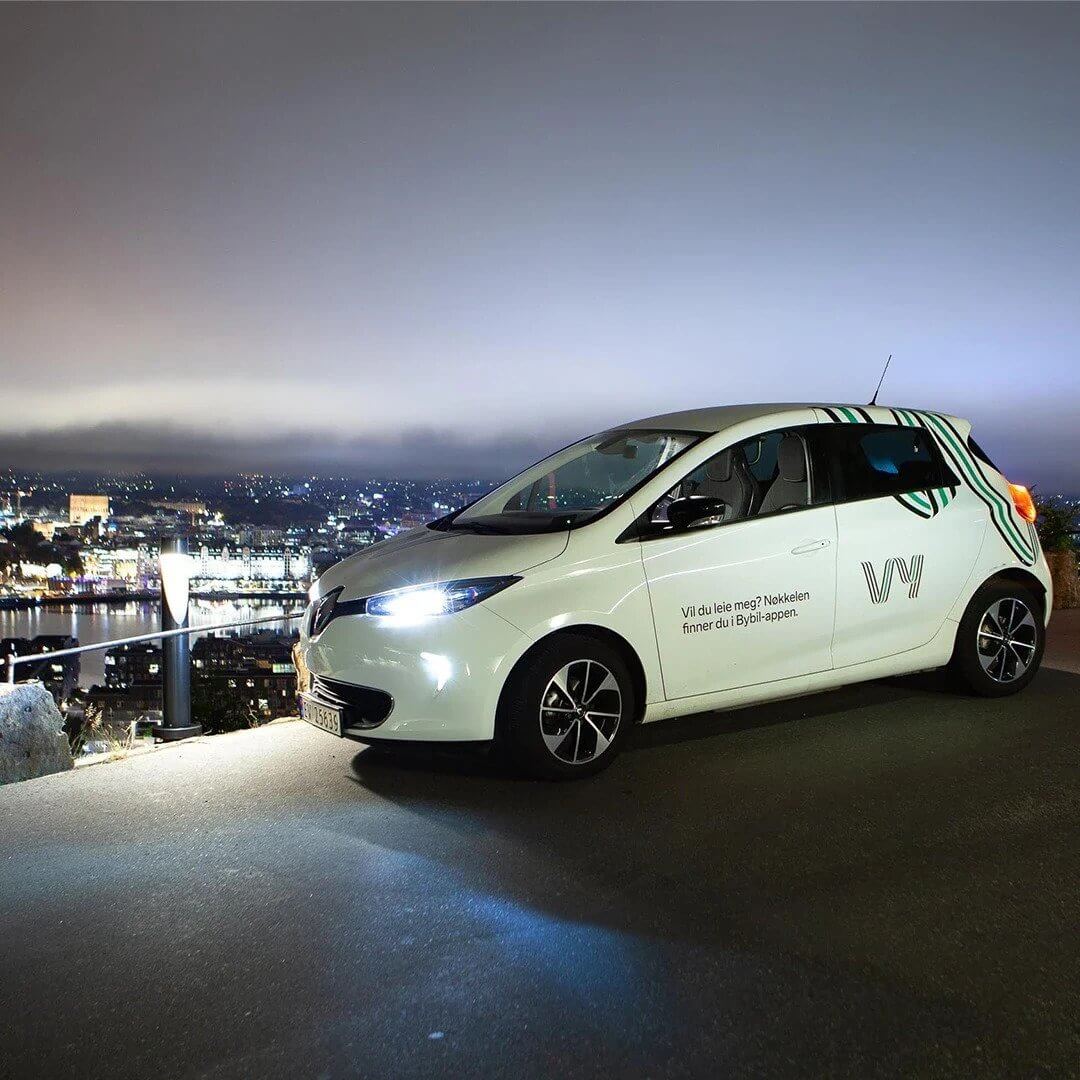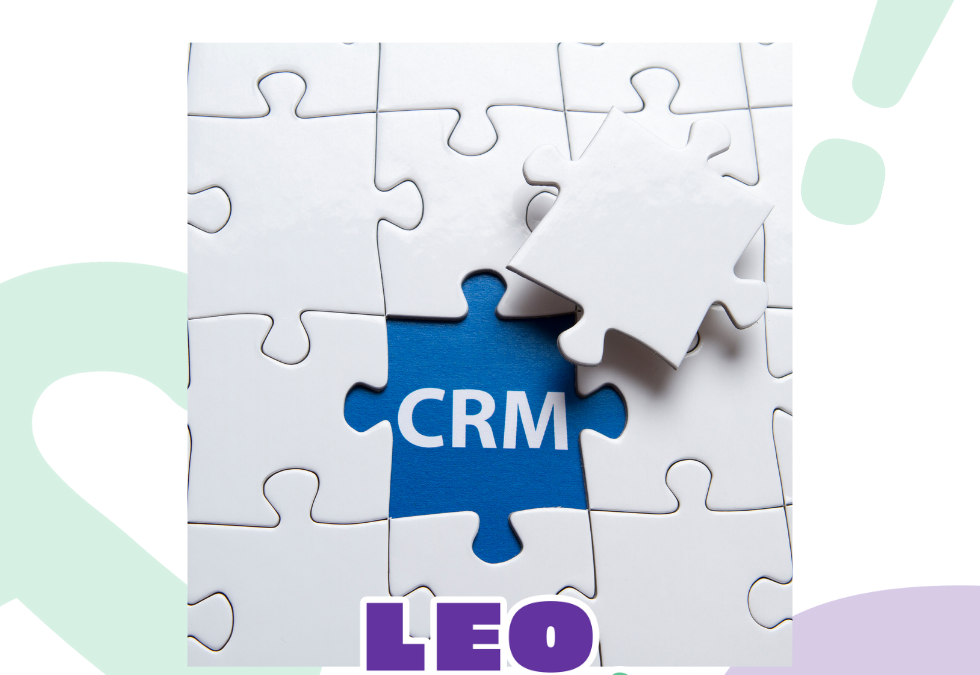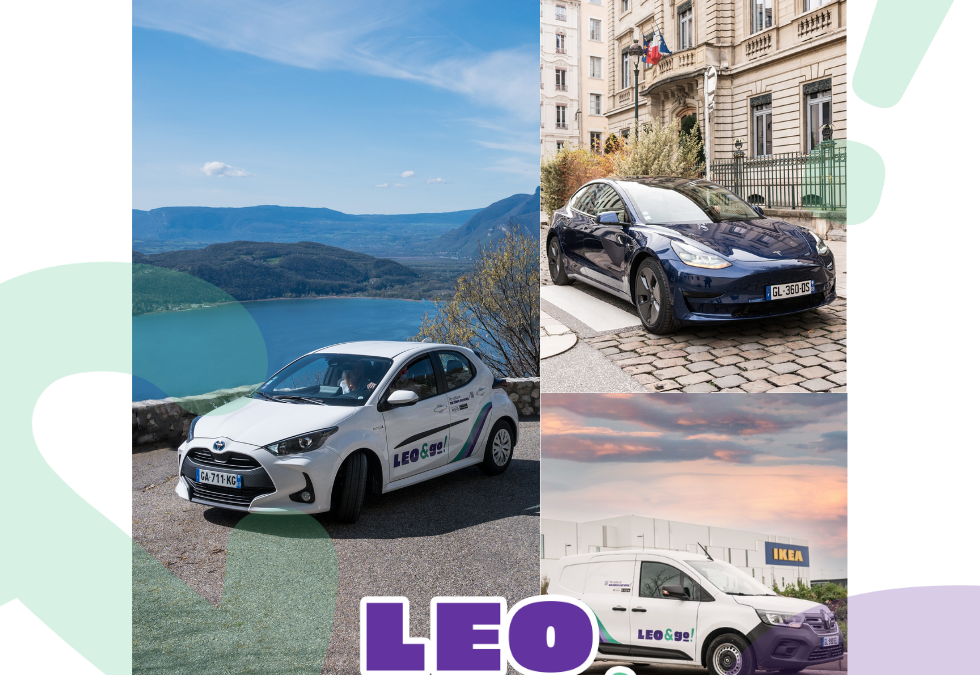Norway’s state-owned transport operator, Vy, focuses on providing the best and “greenest” journey for its customers and community.
OSLO. July 29, 2020 For this edition of The Shared Journey, we sat down with Espen Dyb Løvold the CEO of Vy, a Vulog-powered all-electric carsharing service that is part of the Norwegian national transportation service Vygruppen, providing 250 vehicles for users throughout Oslo. Together, we discussed the future of shared mobility in Norway, the impact of Covid-19 on green legislation, and how carsharing fits within the wider transportation ecosystem.
Tell us more about yourself and what motivated you to work in the mobility industry?
I ended up in the mobility industry by fluke. I finished school and was looking for a job. Avis was hiring and I went for an interview. That was 20 years ago!
What has kept me motivated to continue to work within the mobility industry is the continuous change I have witnessed over the past two decades.
I like the idea of being able to start fresh with whatever technology you would like to use and all of the possibilities for a customer experience that it unlocks. I think the model of renting out a car without a stack of paper contracts, without a line of people waiting, without having these physical premises like an office and parking garage, think that belongs to the future.
Norway is known to have eco-friendly mobility systems, and Norwegians in particular seem to highly value and respect the environment. Tell us about how shared mobility plays into this well-known cultural perspective?
The main objective is to have people use public transportation, but in order for that to happen, we need to address some of the trips that do require a car. Our offer is providing security around certain types of trips that make people feel comfortable living without their personal car.
We conducted a survey in November of 2019 that found that 10% of our customers had sold their car because we were able to provide that mobility solution for them. This result is something that we are proud to talk about.
Norwegians have always lived close to nature, especially in Oslo where the forest is just a tram ride away. Being in a city rich in resources puts Oslo in a unique position to develop innovative solutions and become a leading environmental city. Oslo’s target is to reduce the city’s CO2 emissions by 50% by this year and by 95% by 2030 compared to the 1990 level. It is important for us to support these objectives and our government officials.
What does the future of shared mobility look like in Norway? How have these plans been altered, or not, by the Covid-19 pandemic?
Oslo is run by a Green set of politicians who have put forward some ambitious environmental goals and they mean business! They want to make Oslo car-free, so they aren’t fooling around when they add toll charges and the car cost, they are really ramping them up. Of course, there will be exceptions, for example for delivery trucks and the elderly, but I do think central Oslo will be car-free.
Would you say that these modes of mobility, especially biking and walking, have been affected by the pandemic? Do you think the adoption has been sped up or slowed down in any way?
I think Covid set it back a little bit because the recommendation was to not use public transportation unless you really needed to, which made the car more relevant. During this period our demand didn’t plummet because we provided an alternative to public transportation. The pandemic, however, also led to several positive environmental impacts. We were able to see what Beijing and LA look like with no smog, so there were some very interesting things concerning the environment that came out once the world stopped.
Tell us about Vy carsharing service in Norway: What is the concept behind the service and how does it fit within the Oslo mobility ecosystem?
In Oslo, there are several carsharing services, with the oldest being about 25 years old. They mostly offer longer trips (days and weeks of rental) in addition to the utility truck rental. Our service, on the other hand, is different: it’s very convenient, a car is always nearby as they are spread throughout the city.
I hope that influences more and more people to consider living without their own private car, and I think that is reflected in the statistics that I shared with you earlier about the 10 percent of people who have sold their car after we launched our service.
In the beginning, other carsharing programs and some citizens criticized us saying that Vy should focus on public transportation, not the carsharing business. But I think that a year and a half into it, the people who used to call us competition now see us as a complement to their services.
We are addressing a 19-minute long one-way trip in the greater Oslo area whereas they are typically providing trips that last for days. If our common goal is for Oslo citizens to get rid of their private cars and use public transportation for 80% of their mobility needs and then supply it with 20% carsharing, then our piece is an essential part of the overall city transportation ecosystem.
Speaking of mobility ecosystems, Vy carsharing is actually a part of the larger national Norwegian transportation company Vygruppen, which operates railways and buses. Can you tell us more about the added value that shared mobility services bring to larger transportation groups, particularly on the path to actualizing MaaS at a national level?
For older generations the car typically represents freedom and I don’t think that is the case with people growing up now, who have less attachment to the car and what it represents. They are more concerned with how they are going to get to X location, saying “I need to go to X, how do I get there?” Vy Group definitely has that focus.
The Vy mobility app is the number one app in the travel part of the app store in Norway. That app is a huge part of Vy’s future strategy, and it will become a MaaS application, adding all kinds of modalities. We are now in the beta version of adding a taxi service and scooters are coming.
How does Vy carsharing and Vygruppen collaborate on joint objectives such as marketing, operations, etc.?
We are starting to become more closely integrated with the Vy Group. We moved into the Vy website and social media accounts a couple of days ago and will be using the Vy newsletters instead of our own. These combined marketing efforts give us more of an opportunity to talk about the possibility of combined trips and services.
It is also good for the Vy group to be able to communicate about carsharing and the futuristic side of what we are doing. Vy group is a 150-year-old train company, so communicating about car sharing changes the brand in a positive and more modern way.
We are also looking into combined offers. Right now we have some shared mobility zones located at train and bus stations but we are looking forward to exploring that even more, being able to sell combined trips with the overall goal of helping the Norwegians to sell their cars and live in a different way.
As a carsharing provider, we depend on city infrastructure, and our service is welcomed by the community. We meet with politicians and collaborate with the Norwegian Center for Transport Research in order to be able to back what we are saying with numbers.
We meet with city officials and ask, “how do you want us to provide this service? How can it play along with your strategy? How can we do this in the best way possible?” We are very focused on leaving a positive footprint and being welcomed in our city.
How is Vulog’s AiMA platform the best “fit” for your service now and in the future?
We were on the old Vulog platform and have recently transitioned to AiMA. My first impression is that it is similar but much more robust and versatile. It is more solid, with more features and flexibility.
But the real interesting part of our choice is the second part of the question: the future. We do have this intention of integrating our services into the Vy app, and the 100% API-based AiMA platform is going to serve us well in accomplishing that.
What do you appreciate when working with Vulog?
We recently did this transition to the new platform together and I appreciate Vulog’s professional way of handling the project for us, and all of the hard work that has gone into it as well as the timelines that have been met. We have had some straight talking and robust project management, including testing and good communication along the way so it has been great cooperation.
What are you most proud of achieving while at Vy?
I think that is the statistic that I keep coming back to the percentage of people who have decided to sell their car after using our service.
What are the next steps for Vy, both in the near and long term?
In 2020 we are looking forward to introducing some add-on services, new products, and new features that are enabled by the AiMA platform, for example, an incentive to charge or differentiated pricing based on pick-up and drop-off location. We will introduce some longer-term products such as a weekend product, meaning that people could take the car to go away for the weekend.
Our average trip is now 19 minutes and we think that some people may like to take the car for longer and are curious to see what it would look like if we introduced that product in addition to our current offer.
In Norway, there is a strong culture for going away to the cabin on the weekend to get away from the city. Our cars can typically drive 250 km before they need to be charged and that is in range of most summer cabins. The country is scattered with charging points so charging is not a big hindrance.
In the long term, we are looking to expand the service both in terms of the number of cars and in terms of geography. We also will continue to explore different types of parking models to provide more flexibility for our users.
Vulog, the world’s leading mobility tech provider, is proud to be powering Vy, the all-electric carsharing service that is part of the Norwegian national transportation service Vygruppen, throughout Oslo. The Vy Group is one of the largest transport groups in the Nordic countries. The company is owned by the Norwegian government and its Ministry of Transport and Communications.




